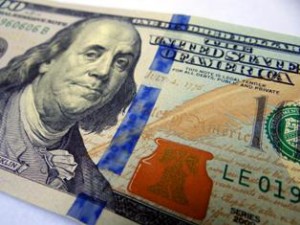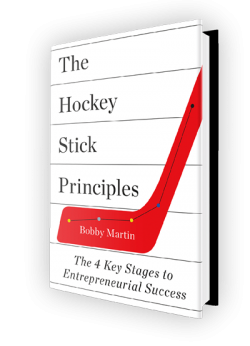This is the first in a three part series on how Ben Franklin’s startup story teaches us that the methods by which startups are conceived, grown, and evolved are timeless.
 Part I: Two Lessons from Ben’s First Four Years
Part I: Two Lessons from Ben’s First Four Years
Diplomat, inventor, statesman, businessman, and politician Benjamin Franklin (1706 – 1790) is credited with inventing many practical devices such as the lightning rod, the Franklin stove, swim fins, a “long arm” to reach books on high shelves, and bifocals, yet he characterized himself on the first line of his last will and testament as “I B.F., printer.”[i]
Ben’s entrepreneurial story from nearly 250 years ago is similar to many entrepreneurs’ stories today. In 1728 when Franklin started his printing company, the industry hadn’t changed drastically since Johannes Gutenberg first used movable type in 1440. Printing companies were a lot like the thousands of innovative internet companies today: entrepreneurial enterprises trying to deliver content in a singular, relevant manner in order to stand out from the competition and thus become necessary to their customers. Printing was the communications technology of the day.
As a youngster in Philadelphia, the smart, curious Ben had wanted to attend Harvard, but his father, Josiah, refused to pay for it, so Ben apprenticed with a candle-maker and a printer to learn a trade. Ben’s first opportunity to start his own print shop came in 1724, when he was 18. Pennsylvania’s governor, Sir William Keith, noticed Franklin’s disposition for good sense and hard work, so he wrote to Franklin’s father encouraging him to support financially a printing venture for his son. But Josiah’s return letter said Benjamin was “too young to be trusted with the management of a business so important, and for which the preparation must be so expensive.”[ii]
After his father’s help fell through, Keith promised to finance Franklin’s new printing venture, but then Keith reneged on his promise, even after Ben had quit his job and sailed to England to purchase printing equipment. But soon he was making the most of the unfortunate twist, remaining in England for 18 months to further his education as an apprentice in two reputable print shops.
During his trip to England, Franklin met Thomas Denham, a Quaker merchant. Back home in America, Denham and Franklin opened a store in Philadelphia. Franklin was a hard-working, diligent storekeeper, and learned a new skill: selling. “I attended the business diligently, studied accounts, and grew, in a little time, expert at selling.”[iii] Unfortunately, not long after the store opened, Denham fell ill and died, and Franklin hadn’t been written into Denham’s will to inherit his portion of the store.
Unemployed and with few prospects, Franklin was forced to start all over yet again.
Learning from Ben’s trials and tribulations
The first three or four years of adulthood were a bit rough for young Ben. He reached high, but each time was shot down. Here are the two main lessons to be learned from Ben’s early years:
- Good luck doesn’t build success. During those first years, Ben did many things the right way, but he was unlucky. He found a reputable financial partner who let him down. He worked hard in a shop and earned the right to own it, but that didn’t pan out, either. Goes to show you – if during the first three years of starting you fail or have bad fortune, it doesn’t mean you’re going to fail in the future. You should ignore the cliché I guess it’s just not meant to be.
- Keep learning. The climax of the story came when Ben had committed himself to starting a printing company by sailing to England to purchase equipment and then was reneged on after arriving. But Ben turned this unfortunate situation into a positive by taking an apprenticeship in England and learning more about the industry. Smart founders of today do this as well. They have a deep appreciation for the long-term nature of building a successful business.
In Part II, which will be posted in the next few days, we’ll see how Ben leverages what he learned in England to create an innovative shop.
[i] (Isaacson 2003)
[ii] (Franklin 1996) p15
[iii] (Franklin 1996) p25
Sign up to get more great insights directly to your inbox.
As a special bonus, you'll also immediately get access to my inside analysis of what made 172 diverse companies achieve take-off revenue growth.
